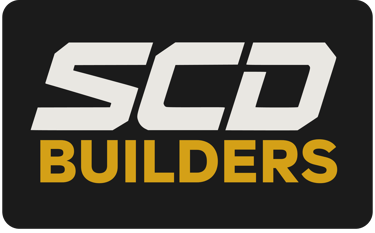Featuring Ray Dejesus
From installing conduits in the field to coordinating full-scale electrical systems in the digital world, Ray Dejesus has spent nearly three decades building the backbone of complex projects. Today, this seasoned Electrical General Foreman is bringing that same field-tested precision into BIM and VDC—so models don’t just look right, they build right.
REAL ELECTRICIANS BEHIND THE BIM
11/13/20253 min read
Featuring Ray Dejesus
From installing conduits in the field to coordinating full-scale electrical systems in the digital world, Ray Dejesus has spent nearly three decades building the backbone of complex projects. Today, this seasoned Electrical General Foreman is bringing that same field-tested precision into BIM and VDC—so models don’t just look right, they build right.
From the Navy to BIM: A Career Built in the Field
Ray started his electrical career in 1998, including his time in the Navy. Over almost 30 years, he has worked across:
Industrial, residential, and commercial electrical
Solar arrays and large-scale solar projects
Conveyor and logistics systems in distribution centers
Fire alarm systems, data, patch panels, and server rooms
For years, Ray did what many experienced electricians do: he made projects work despite the drawings, not because of them. He routinely navigated issues that weren’t visible on paper—structural columns, ductwork, HVAC, and site realities that designs simply didn’t account for.
That experience shaped his perspective:
“You need someone designing and coordinating this who’s actually been in the field. Not just straight out of school.”
Why He Traded Tools for a Keyboard
Ray’s move into BIM/VDC wasn’t about leaving the trade; it was about improving it.
After decades reading blueprints, arguing with engineers, and solving constructability problems on the fly, he saw BIM as a way to finally fix issues upstream—before they hit the jobsite.
Too many models are created without real-world install experience
Clash detection becomes a band-aid instead of a last line of defense
Field crews end up spending time and money fixing what could have been coordinated digitally
“In the field, we install so we don’t have to go back and move things. That’s exactly what I want to bring into BIM.”
The Hardest Part of the Transition
For Ray, the biggest adjustment hasn’t been the software—it’s the pace.
After 20+ years of being physically active in the field, adapting to a more stationary, screen-focused role is a real change. Even so, he has leaned into learning:
Revit and Navisworks are now part of his daily toolkit
Lab videos and recorded sessions let him dive deeper at his own speed
His field background gives him an immediate advantage in understanding constructability, code, and coordination
“I’m no computer genius, but I’m picking it up. You just keep watching, keep learning, and bring your field experience into it.”
How BIM Has Changed the Way He Sees Construction
Working inside coordinated digital models has reshaped how Ray views projects as a whole.
Recently, he and a small group:
Cleared plumbing clashes across multiple floors
Identified and resolved door conflicts
Corrected wall and slab alignment issues using real-world logic
Seeing construction digitally before it exists physically has reinforced one core belief: when real builders are involved early, everything gets better—schedule, quality, and safety.
Why Electrical Contractors Can Trust SCD Builders
If Ray could speak directly to an electrical contractor considering SCD Builders for BIM/VDC, his message is simple:
We’ve been in your boots.
We know what’s at stake when the model is wrong.
We’re here to make life easier for the people installing the work.
“We’re trying to make their lives easier because we wish someone had done that for us.”
Instead of modelers guessing at conduit routes, rack layouts, and field constraints, SCD Builders puts experienced tradespeople inside the coordination process. That means:
Fewer surprises in the field
Fewer redlines and workarounds
More build-ready models that respect code, clearances, and real-world installation practices
BIM Is Not “Just Drawings” — It’s the Foundation for Prefab and Installation
Ray pushes back hard on the idea that BIM is merely a prettier set of drawings:
“This isn’t just someone in AutoCAD making 2D lines. These are people from the field, with real 3D experience in their mind and on the job, involved from the very beginning.”
That field-driven perspective is what turns BIM from “nice visuals” into:
A reliable platform for prefabrication
A blueprint for actual installation sequences
A shared source of truth for electrical, mechanical, plumbing, and structural teams
The Projects He Wants Next
When it comes to future BIM/VDC work, Ray isn’t looking to specialize too narrowly:
Data centers
Hospitals
Commercial buildings
Logistics and distribution facilities
“I’d like to get a little bit of it all.”
Every new project type is another opportunity to apply—and expand—his constructability experience.
How Ray Adds Value as a BIM/VDC Manager
Ray’s value doesn’t start with software. It starts with years of solving real problems in real buildings:
Designing conduit runs, pipe racks, and routing in the field
Keeping installations within code and coordinated with other trades
Navigating the gaps between design intent and jobsite reality
Staying open to feedback, learning new tools, and collaborating across disciplines
“We’ve been designing this stuff in the field for 20+ years. Now we’re doing it before the building even exists.”
About SCD Builders
SCD Builders is a BIM/VDC outsourcing, staffing, and training organization built by former field professionals. Our teams are made up of real electricians, foremen, and builders who once installed the systems they now model.
Our mission is simple: put real builders behind the models so jobs get built right—the first time.



